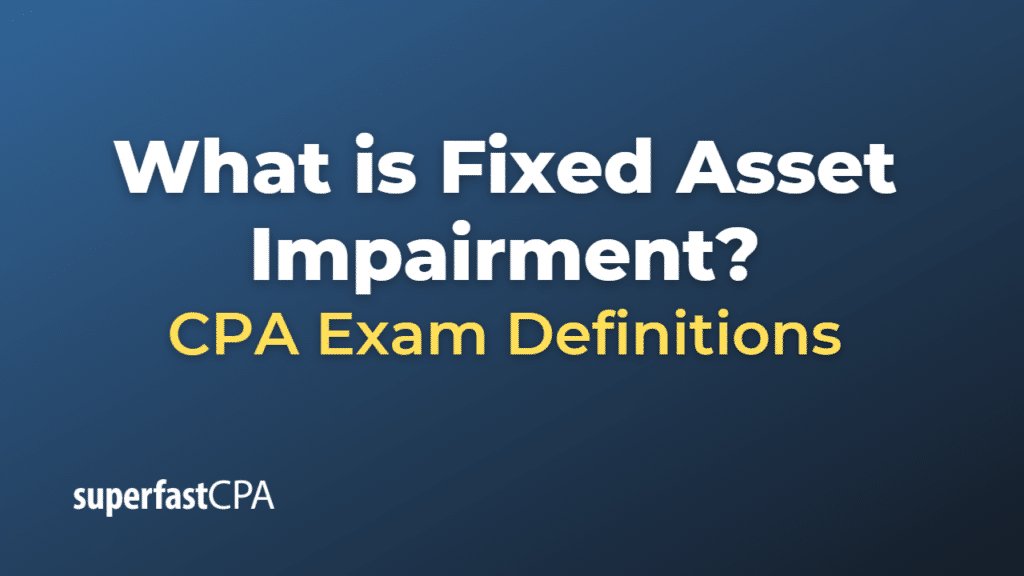Fixed Asset Impairment
Fixed asset impairment is a reduction in the value of a fixed asset below its carrying value on the balance sheet, also known as its book value. This can occur when the market value of the asset drops significantly, or when the asset is damaged, becomes obsolete, or is not expected to generate as much income as originally expected.
In accounting terms, impairment is recognized when the carrying value of an asset is not recoverable, meaning the sum of the expected future cash flows from the asset (its value in use) or its fair value less costs of disposal (its recoverable amount) is less than its carrying value. When an asset is considered to be impaired, an impairment loss is recognized and the asset’s carrying value is reduced to reflect its lower value. This process is outlined in International Accounting Standards (IAS 36).
Identifying impairment and accounting for it properly is important to ensure that a company’s financial statements provide an accurate picture of the company’s financial health and the value of its assets.
Fixed asset impairment can affect any type of fixed asset, including buildings, machinery, equipment, and intangible assets such as patents or goodwill. The specifics of impairment recognition and calculation can vary based on the type of asset and the accounting standards in use.
Example of Fixed Asset Impairment
Let’s consider a hypothetical company, TechCo, which produces smartphones. TechCo purchased a specialized piece of machinery for $2 million to produce one of their smartphone models. This machinery is being depreciated over 10 years on a straight-line basis, so its carrying value decreases by $200,000 each year.
After 3 years, a new technology emerges in the market that significantly improves the efficiency of smartphone production. However, this new technology requires different machinery, making TechCo’s existing machinery obsolete. TechCo’s existing machinery has a carrying value of $1.4 million at this time ($2 million original cost – $600,000 accumulated depreciation), but due to the obsolescence, its fair value is now only $800,000.
According to the impairment rules, TechCo should compare the carrying value of the asset ($1.4 million) with its recoverable amount. The recoverable amount is the higher of the asset’s fair value less costs of disposal and its value in use. In this case, assume that the value in use is also less than $1.4 million and that the cost of disposal is negligible.
Because the recoverable amount ($800,000) is less than the carrying value ($1.4 million), the asset is considered impaired. TechCo needs to recognize an impairment loss of $600,000 ($1.4 million carrying value – $800,000 recoverable amount) in its income statement.
The journal entry for this impairment loss would be:
- Debit Impairment Loss (Expense) $600,000
- Credit Accumulated Depreciation $600,000
This reduces the carrying value of the machinery to its new, lower recoverable amount. By recognizing the impairment loss, TechCo ensures that its financial statements reflect the diminished value of the machinery.














